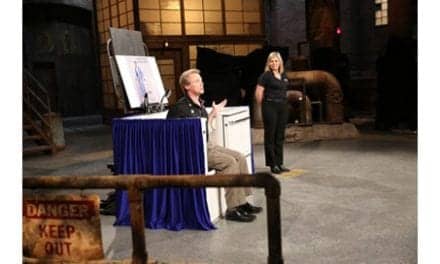German athlete Wojtek Czyz, running with a space-tech enhanced prosthetic leg, set a new world record at the Paralympics 2008 in Beijing, reaching an amazing 6.50 m and beating the previous world record by 27 cm.
In spring 2004, the European Space Agency‘s Technology Transfer Programme technology broker MST Aerospace, Cologne, Germany met with Czyz and his trainer to perform a prescreening of the most crucial elements of the prosthesis used by Czyz. Having lost part of his left leg 3 years before in a sports accident, he now uses a prosthesis in two athletic disciplines: long jump and sprint competitions.
"The objective was to see how to improve his performance, and we found the most important problem was related to a connection angle, the so-called L-bracket, between the knee joint and the foot module," says Werner Dupont, MSTs managing director. "In collaboration with the German company ISATEC, we developed a new L-bracket using materials originating from the alpha magnetic spectrometer (AMS), an instrument that will be mounted on the International Space Station to study extraterrestrial anti-matter, matter, and missing matter."
The advantage of the space materials is they are extremely strong and at the same time lighter than conventional products available, both important advantages for top athletes’ performance. The problem with Czyz’ previous prosthesis was that it tended to break when he performed to the maximum of his capacity.
At the previous Paralympics Games in Athens, Czyz competed with a space-tech enhanced prosthetic leg and won a gold medal in three disciplines: 100 m sprint, 200 m sprint, and long jump.
Following this success, MST and ISATEC, a German engineering company dealing with light materials, continued to work on improving the prosthesis. In a series of investigations undertaken by MST, including a number of advanced calculations on the dynamic performance of the materials done by ISATEC, a single-part foot module made in carbon fibre reinforced plastics proved to be the most promising solution for a sprint prosthesis.
For the long jump discipline, the previous design consisting of an L-bracket and a foot module was proven to be the most efficient.
"We first started working on improving the prosthesis for the sprint discipline, and then further improved the long jump prosthesis as well," Dupont says. "This latest development turned out to be a great success at the Paralympics 2008, and helped Wojtek Czyz beat the world record by an incredible 27 cm."
The next step, which we are already looking into with our partners, is to use this expertise for similar developments of prostheses for other disabled people, he says.
[Source: Medical News Today]




